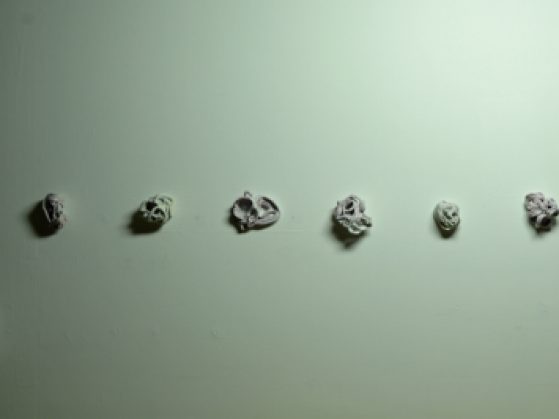2017 Best in Sculpture – Isabella Comai

Rhizomorphs
This collection of ceramic objects was inspired by the rhizomorphs, or rootlike structures of an extinct genus of tree-like plants called Lycophytes. I want the viewer to notice the natural forms of each individual specimen and as a collective. The structures that inspired me originate from a common stem and branch off in a spiral arrangement similar to that of leaves on a tree. During the Pennsylvanian period around 323.2 million years ago to 298.9 million years ago, Michigan was covered in swamps filled with many different types of plant life. Among the most prevalent were Lycophytes, a plant group which is one of the main contributors of the carbon found in the coal that formed during this period. The remnants of many of these plants can be found in the coal veins and shale deposits in the carboniferous outcrops of Michigan. Intricate rootlike structures intertwine to support Lepidodendron, a type of scaly arborescent lycophyte that prospered in swamps of the period and grew more than a hundred feet in height. Instead of true roots, these massive plants had branch like appendages, called rhizomorphs, that protruded down through the surface of the swamp. Spiral structures diverge from the central stem to reach for surrounding water. Fossils from this period show the amazing stigmaria, or underground “root” structures of these extinct plants.
The silt stone fossils were commercialized in 1859 when the first pottery opened in Michigan. The fossils were ground to dust and turned to clay. Products from the Grand Ledge area included clay tiles fired in huge beehive kilns and used to construct brown ceramic corn silos. The silos, now empty, are still seen standing in many Michigan farmsteads. I incorporated the physical source of my inspiration (clay) into the form I created to complete the transition from life to the representation of that life.
Producing these forms became a meditation on the transformation of material, from prehistoric life to representational form. The memory of the living root systems, unseen when alive and ground to formlessness after hundreds of millions of years was the inspiration for this sculpture.
